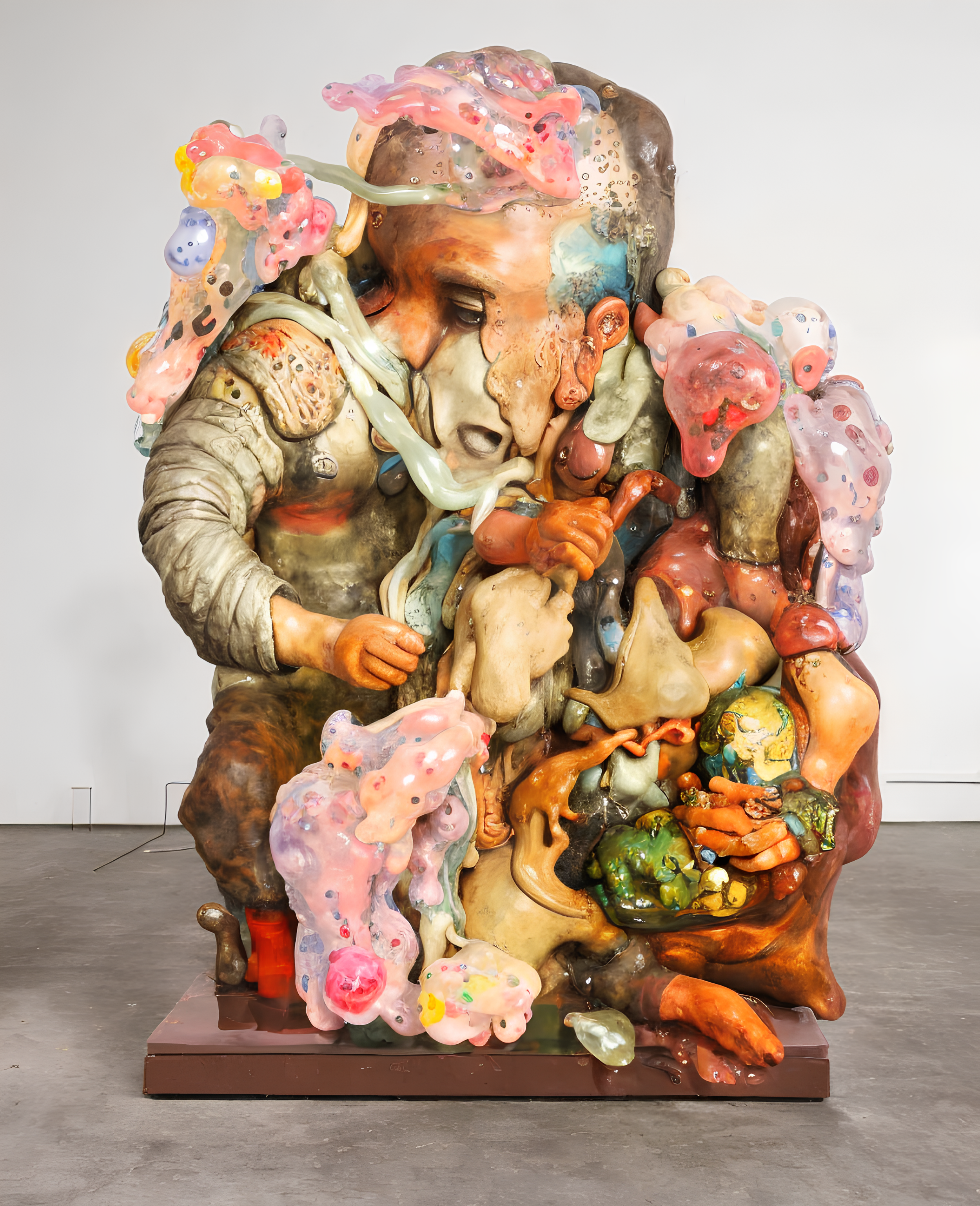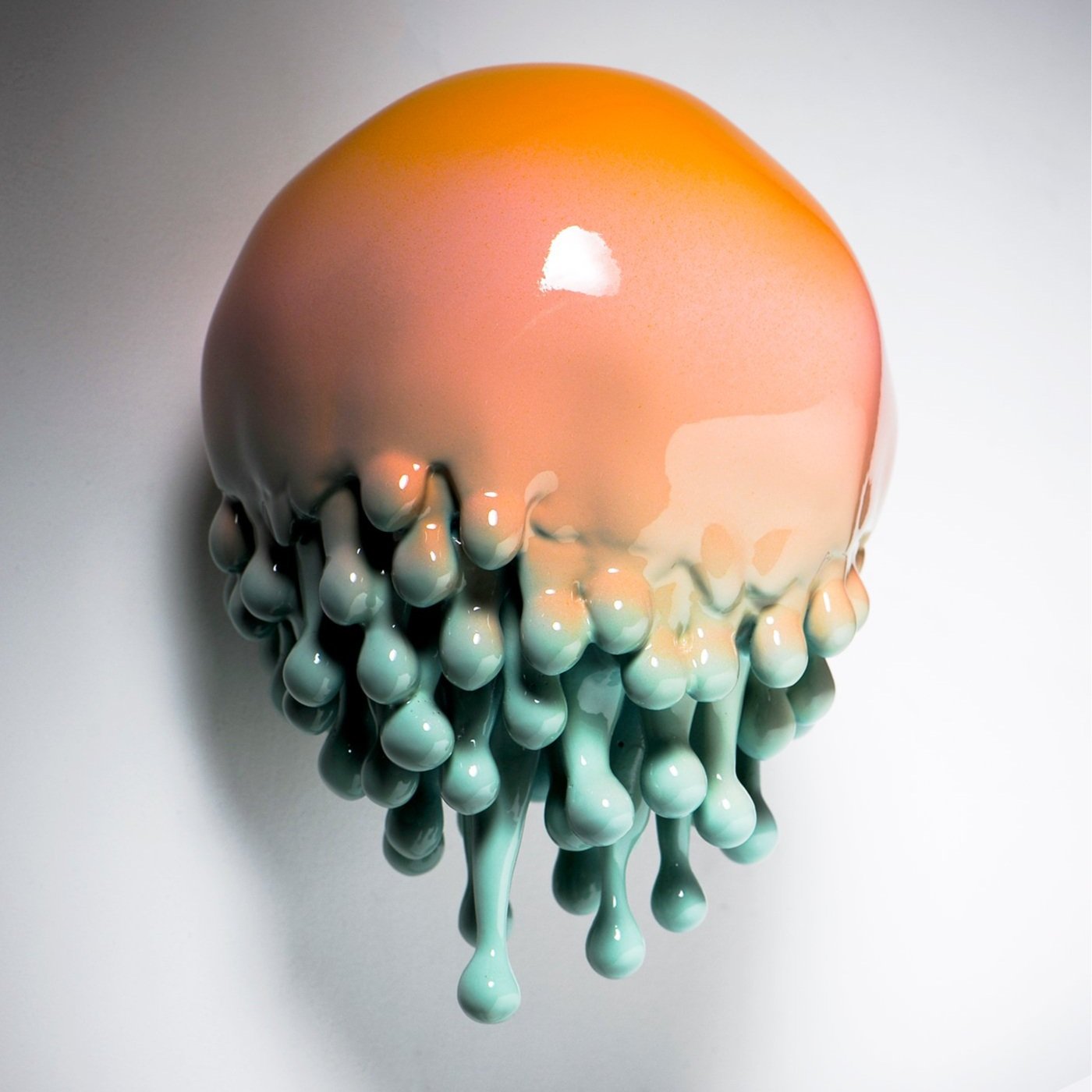Peter The Roman

“That's what makes it feel alive and almost otherworldly. It's like the piece has a mind of its own, a personality that's unique and unpredictable. I think that's what art is all about, really – exploring the unknown, taking risks, and embracing the unexpected.”
Could you tell us a bit about yourself and your background? Where did you study?
I was born and raised in South London, and I still call this place my home. I went to art school in London in the early 2000s, where I earned my BA in the arts. After that, I went on to do a Masters in Fine Art. For many years, I worked as a painter and sculptor, and my work has been exhibited in New York, Berlin, and London.
But for the past five years or so, I've been focused mainly on digital art. I love the freedom that comes with this medium, and the fact that I can create from the comfort of my own home. You see, I'm a bit of a recluse. I suffer from pretty bad social anxiety, so I don't get out much. I spend most of my time in front of my computer screen, creating art. That's why I like to keep things anonymous and go by the pseudonym "Peter The Roman". Using a pseudonym has given me a new sense of freedom, allowing me to recreate myself. Many other digital artists do the same, and it's a great way to express ourselves without feeling too exposed, its part of the digital culture.
Could you discuss how your use of digital tools and AI creates unpredictability and adds an otherworldly quality to your work?
I love technology. I think it's fascinating how we can create art using these new tools and techniques. The use of 3D digital software and AI technology in my work adds a whole new dimension to it. It's like taking something that's already beautiful and making it even more beautiful, if that's possible.
But what I find really interesting is the unpredictability of it all. You see, I'm not in complete control of the final product. Sure, I can manipulate the software and the algorithms, but there's always a certain level of chance involved. And that's what makes it so exciting. It's like opening a present on Christmas morning – you never know what you're going to get.
And that's what makes it feel alive and almost otherworldly. It's like the piece has a mind of its own, a personality that's unique and unpredictable. I think that's what art is all about, really – exploring the unknown, taking risks, and embracing the unexpected.
Untitled (Screen Presence), 2023
Porcelain Dreams 01, 2023
Porcelain Dreams (Tom Cruise), 2023
Untitled (Movie Star), 2023
How do you balance the beauty and grotesqueness of your work with melting and bloated forms?
To me, beauty and grotesqueness are not separate concepts, but rather two sides of the same coin. I believe that beauty can be found in anything, even in things that are typically considered ugly or grotesque. Similarly, something that is conventionally considered beautiful can also have a darker or more grotesque side to it. This interplay between the two is what interests me most.
When I create these pieces, I'm not necessarily trying to balance beauty and grotesqueness. Instead, I aim to create something visually captivating that speaks to me. I create organic forms that seem to be constantly in motion. The vibrant colors that I use add a playful quality to the pieces, which can sometimes contrast with the more grotesque aspects. But at the end of the day, it's all about creating something that I find intriguing to look at. My goal is to create objects that are visually appetizing, something you could almost eat.
How does your work challenge the viewer's perception of reality and authenticity, as you strive to create digital entities that seem to exist in a tangible world, blurring the lines between the virtual and the real?
I like to explore the boundary between the digital world and reality, prompting the viewer to question what is real and what is not. I find the concept of digital entities mimicking real-life settings to be intriguing, like a modern-day version of Pinocchio's dream of becoming a real boy. As technology advances, we come closer to realizing this dream, especially with the rise of AI. By imbuing my creations with a sense of lifelikeness, I challenge the viewer's perception of what is authentic and what is not. I hope that my art sparks contemplation on the nature of existence and encourages a deeper appreciation for the line between the real and the simulated.
Blob Soldier #021, 2022
Blob Soldier #041, 2022
Blob, 2022
Tell us a bit about how you spend your day / studio routine? What is your studio like?
Unfortunately I lost my studio just before Covid hit due to studio rent increases. My bedroom became my studio, which is totally fine for a digital artist and of course worked well during Covid. I don't really have a set schedule, sometimes I find myself getting real creative in the late hours, working into the night like a madman. I go through these phases where I just can't stop making art, it's like an addiction. But other days, I spend way too much time scrolling through social media and binging on self-help podcasts and YouTube tutorials.
It's all part of the process, sometimes you got to consume a whole lot content before you can create your own.
What artwork have you seen recently that has resonated with you?
Earlier this year, I had the pleasure of visiting the group exhibition titled "Strange Clay" at the Haywood Gallery. The show featured an exceptional curation of artists whose works deeply resonated with me. Personally, I have always been drawn to clay as a medium, as the firing process gives rise to a magical transformation of colors and glazes. All in all, it was a truly fantastic exhibition.
Is there anything new and exciting in the pipeline you would like to tell us about?
Currently working on a new series of bust sculptures which I plan to release as a digital collectable, also hoping to show my ‘Blob’ (a real life sculpture created in collaboration with @movi_808) in galleries soon.
All images are courtesy of the artist
Date of publication: 20/04/23








